A Cholera Outbreak Introduced Into Haiti by a Foreign Source
A Cholera Outbreak Brought to Haiti by Relief Workers or UN Troops
By Dady Chery
Haiti Chery
October 22, 2010 – As of February 2010, Haiti had not had a cholera outbreak for decades and was considered at no risk for cholera by the Centers for Disease Control (CDC) and all medical travelers advisories.
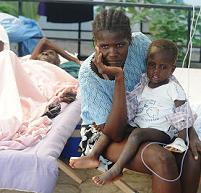 A publication from the CDC, prepared one month after the earthquake, dismissed fears of cholera with the following explanation.
A publication from the CDC, prepared one month after the earthquake, dismissed fears of cholera with the following explanation.
“For a cholera outbreak to occur, two conditions must be met:
(1) there must be significant breeches in the water, sanitation, and hygiene infrastructure used by groups of people, permitting large-scale exposure to food or water contaminated with Vibrio cholera organisms; and
(2) cholera must be present in the population. While the current water, sanitation, and hygiene infrastructure in Haiti would certainly facilitate transmission of cholera (and many other illnesses), cholera is not circulating in Haiti, and the risk of cholera introduction to Haiti is low. Most current travelers to Haiti are relief workers from countries without endemic cholera, and they are likely to have access to adequate sanitation and hygiene facilities within Haiti, such that any cholera organisms they import would be safely contained. Similarly, importation of cholera through contaminated food has not been documented in Haiti in decades and is unlikely to become a problem during the relief efforts.”
Significant breaches
Certainly, there have been breaches in the water sanitation in Haiti. On the other hand, there are also major public health campaigns to teach the homeless to boil their drinking water or to consume only bottled water that they regard as being safe. By nature, cholera outbreaks are short lived. This is because the cholera-causing bacteria, Vibrio cholera, are killed within a day by water-borne viruses that are harmless to humans. A cholera outbreak can only persist if people innocently continue to drink infected water that they trust as being potable. It is imperative that all trusted sources of drinking water in the area of the outbreak be immediately tested for the presence of Vibrio cholera bacteria.
Presence in the population
Since there has been no cholera in Haiti for decades, it almost certain that this cholera outbreak was brought to Haiti by relief workers or U.N. troops coming from countries with endemic cholera. It is therefore astounding to see these individuals treat Haitians as if they are the ones who should be feared. Cholera is transmitted through water, not by human-to-human contact. Mask-wearing relief workers who are unaware of this will surely not appreciate that they themselves could be a source of the bacteria; it is safest for everyone that these individuals stay in their home countries.
UPDATE #1, October 25, 2010 – As of Sunday October 24th, 253 Haitian brothers and sisters had been reported dead of cholera, and 3,115 others were hospitalized.
To blame this outbreak on “overcrowding and poor sanitation”, as is routinely done in the news, is to suggest the impossible: that Vibrio cholera bacteria can spontaneously reappear, out of thin air, after an absence of over 100 years from Haiti. For an explanation of the absurdity of pronouncements about “poor sanitation”, please see my earlier comments (article below) that expose the source of the cholera in Haiti as being foreign. I stand by those comments. In addition, I want some answers to the following questionable aspects of Haiti’s cholera outbreak.
A prison with three cholera deaths? In a prison in the center of the country, 50 inmates came down with the disease, and three have died.
How do institutionalized people, who lack access to natural sources of water such as rivers and streams, become exposed to cholera?
A small offshore island with 15 cases of cholera? Fifteen cases of cholera have been noted on L’île de la Gonâve, a small island off of the coast of Haiti.
Recent news stories have been blaming the Artibonite River as the contaminated source. It would be an extraordinary feat for Vibrio cholera to swim across the sea between islands and then dive into a source of fresh water. How was the trick done?
Mr. Jon Andrus, deputy director of the Pan-American Health Organization (PAHO), has warned everyone that the outbreak is
”likely to get much larger given our experience with cholera … particularly in a population that has really no protective immunity”.
Yes, it is tragic that Haitians have no protective immunity against cholera. It would be criminal if it had been introduced in Haiti through carelessness or malice.
What is the specific strain of cholera currently in Haiti?
When a reliable agency, such as the CDC, gets serious about an epidemic, it identifies not only the bacteria in broad terms, but also the specific strain of the bacteria. In other words, the analysis of a sample of contaminated water should tell, not only if the organism is cholera, but also what type of cholera it is. This would reveal how this specific cholera go into Haiti. So far, there has been no official identification of the cholera in Haiti, apart from a statement from Haitian Minister of Health Alex Larsen declaring that “This effectively concerns a cholera epidemic….”
Haitian brothers and sisters: cholera is a treatable disease. The treatment for it is fluids — lots of clean water with a bit of sugar and salt. Boil the water if you get it from a natural source like a stream. Coconut water is great if you can get it. Accept bottled water only from trusted, friendly sources.
Reference
‘Fatal Sickness’ Outbreak in Haiti, By Staff, Al Jazeera, October 22, 2010.
Source: Haiti Chery (Oct 22, 2010, updated Oct 25)

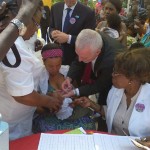
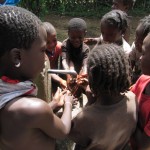
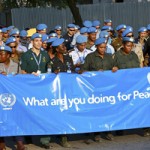

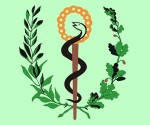

Comments
A Cholera Outbreak Introduced Into Haiti by a Foreign Source — No Comments